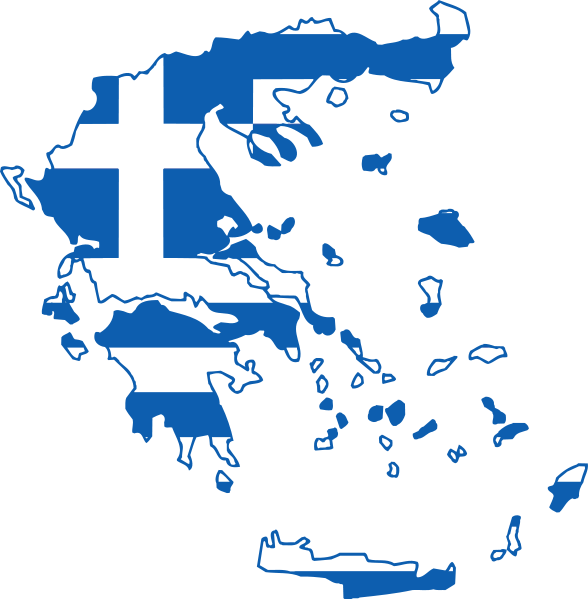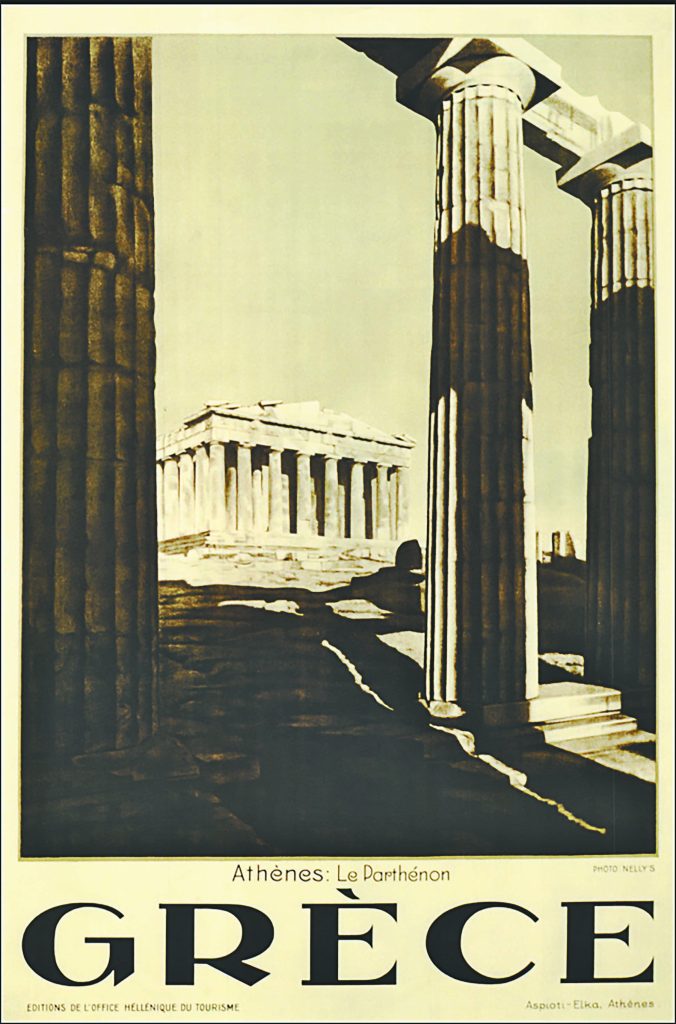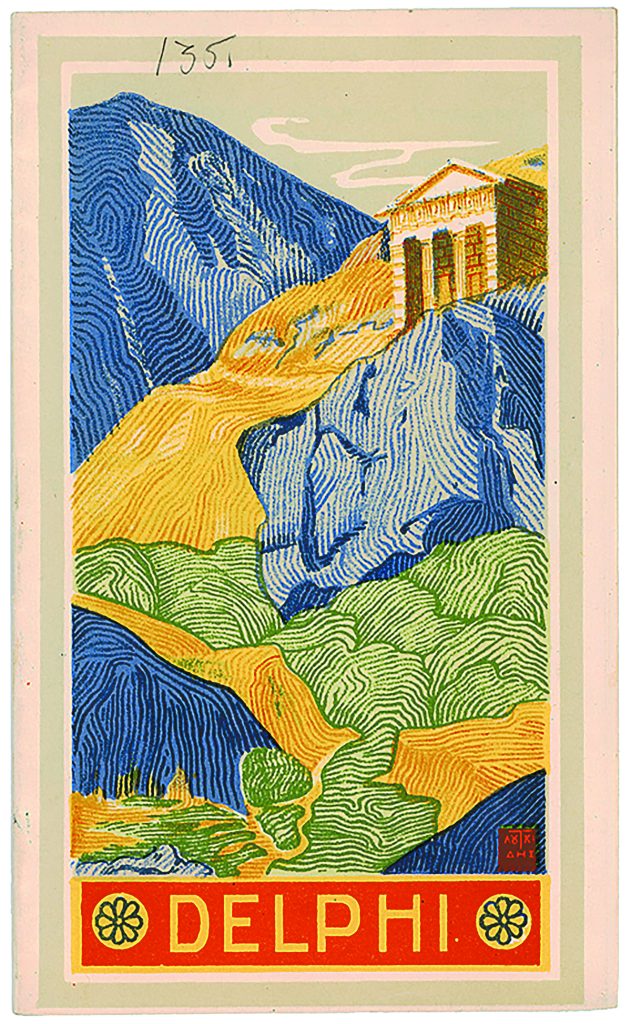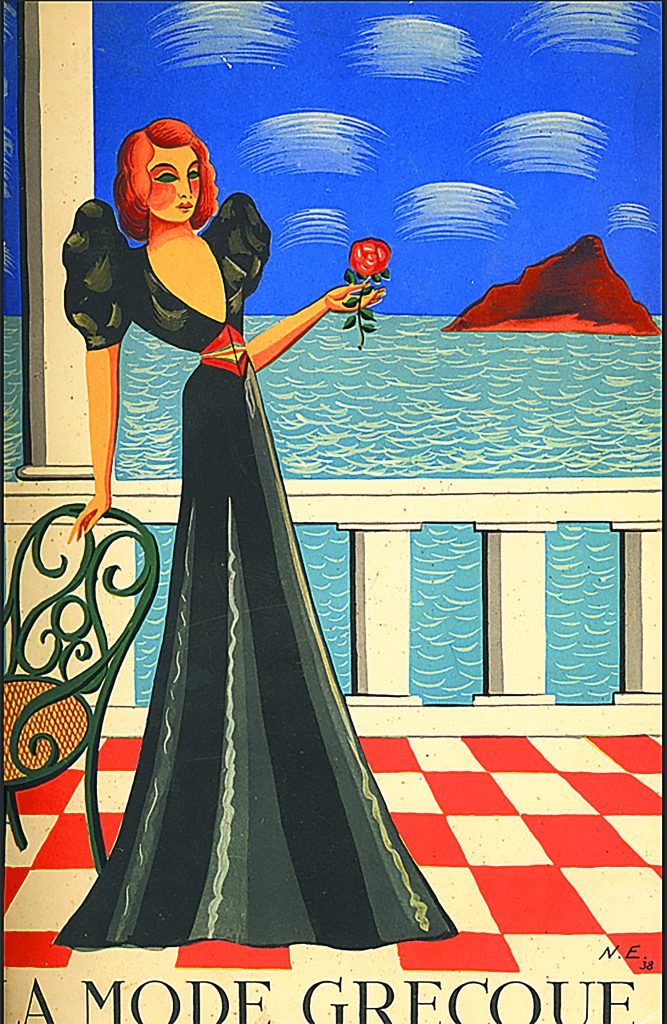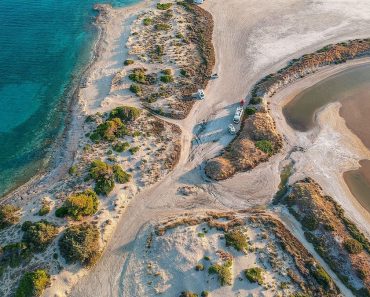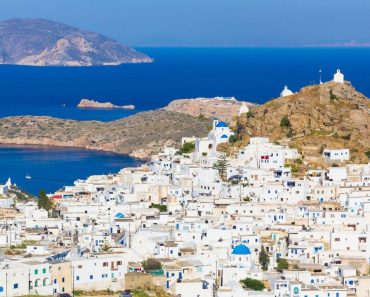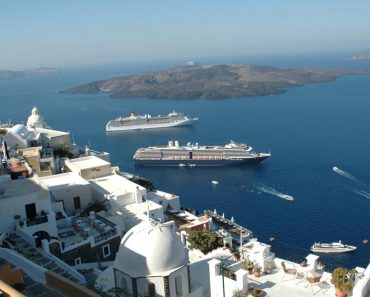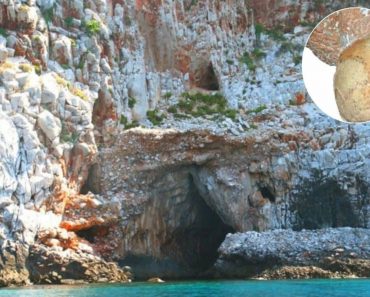A rare collection showcasing Greece’s international tourism campaigns is currently on display at the Historical and Ethnological Society’s exhibition on the island of Hydra. From the first-ever tourism poster featuring a photograph by Nelly’s, to the avant-garde visual compositions of artists like Nikos Engonopoulos and Yannis Tsarouchis, the exhibit spans the evolution of Greece’s tourism identity from the 1920s to the mid-1960s.
Among the standout items are the very first official tourism poster from 1929—a striking image of the Parthenon captured by Nelly’s—and pre-war brochures, including a 1938 design by Engonopoulos. The exhibition also features works by some of Greece’s most acclaimed artists such as Tassos Vrettos, Yiannis Tsarouchis, Panayiotis Tetsis, Spyros Vassiliou, Giannis Faitakis, and Periklis Byzantios. These rare artifacts collectively trace the roots of Greece’s tourism industry and its evolving image abroad.
Visitors to the exhibition will find answers to key historical questions: How were the Delphic Festivals organized by Angelos and Eva Sikelianos linked to the beginnings of organized tourism in Greece? What was the Greek state’s strategy for attracting visitors after World War II, when much of the country’s infrastructure was destroyed? And how was Greece marketed during the post-war “golden era” of 1950–1965?
These insights are brought to life through 40 posters and numerous brochures—some featuring designs that remain visually groundbreaking even today. The exhibition is hosted in the historic Lazaros Kountouriotis Mansion, a branch of the National Historical Museum, and runs through the end of October.
Reflecting the Times
The exhibition not only traces the development of tourism in Greece, but also mirrors the country’s historical shifts and governmental priorities in response to changing social, economic, and political conditions. From the romantic pre-war depictions of ancient monuments and cultural heritage to the modernist and abstract designs of the 1960s, the exhibit presents a forward-thinking and timeless approach to how Greece promoted itself as a travel destination.
This transformation is largely thanks to the talented artists who contributed their skills to these campaigns, infusing art into public promotion.
Tourism as Statecraft
“1929 marked the founding of the Greek National Tourism Organization (GNTO) during Eleftherios Venizelos’ administration,” explains exhibition curator Iphigenia Vogiatzi in an interview with Ta Nea. “Our display includes the very first GNTO poster from that year. However, we also showcase even earlier brochures from private initiatives like the Hellenic Touring Club, which actively worked to attract visitors to Greece. Their efforts eventually paved the way for the creation of the Epidaurus Festival.”
The exhibit also includes material from the Delphic Festivals (1927–1930), organized by Angelos and Eva Sikelianos—events which, although not widely known, received some funding from the GNTO.
The Metaxas Era
During the Metaxas dictatorship (1936–1941), the GNTO was dissolved and tourism promotion shifted to the newly formed Ministry of Press and Tourism. “The regime used tourism as a tool to promote its ideological vision, focusing heavily on Greek folklore and encouraging domestic tourism,” Vogiatzi notes.
The few posters from this period highlight traditional customs rather than classical monuments. There was also a notable emphasis on spa towns, in line with the European trend of therapeutic tourism.
A Golden Era: 1950–1965
World War II left Greece in ruins. With the help of the Marshall Plan, the government made tourism a cornerstone of its recovery strategy. “The first post-war posters were produced in 1947,” says Vogiatzi. “They featured idyllic landscapes, though not tied to specific locations—since infrastructure was still in shambles, only accessible areas were promoted.”
In the early 1950s, the GNTO was reestablished, marking the beginning of a highly productive and innovative 15-year period. In 1951, the organization declared it the “Year of the Diaspora,” with a poster by Alexandros Alexandrakis that became iconic: a young woman in traditional dress welcoming a visitor—a touching homage to Greeks living abroad.
During this period, regions like Rhodes, which had avoided wartime destruction and were newly integrated into the Greek state, received promotional focus. Gradually, areas of special interest also started gaining attention.
Greece Looks Outward
By the mid-1950s, Greece was beginning to open up to the world in earnest. The Athens and Epidaurus Festivals were launched, and GNTO began collaborating with international companies to organize tours across the country—by bus, ship, and other means.
By the mid-1960s, Greece started targeting German-speaking audiences; up until then, all promotional materials had been in English and French. This period also saw a shift in artistic style. “Modernist design began to dominate,” Vogiatzi explains. “Creators like the husband-and-wife team Katsourakis and graphic design legend Frederick Carabott left an indelible mark with visually striking, timeless compositions.”
Among the contributors to these historical posters were renowned photographers like Nelly’s, Nikolas Tombazis, Dimitrios Harissiadis, and Maria Chrousaki, as well as lithographers such as Othon Pervolarakis and Sebastianos Kourkoulos—figures whose work helped define an era.
A Special Focus on Hydra
The exhibition also pays tribute to tourism in Hydra. “There’s a photo of the ship Neraida, owned by Yiannis Latsis, who played a key role in the island’s tourism development,” notes Vogiatzi. The exhibition itself is funded by the John S. Latsis Public Benefit Foundation.
Additionally, the event is accompanied by a digital exhibit titled Imagining Greece, created by an interdisciplinary team of researchers. The digital component emphasizes the role of tourism in shaping post-war Greek identity.
Imagining Greece is part of the research project Tourism and Nation Branding 1945–1990, supported by Research England and the Onassis Foundation. Much of the material featured in the digital exhibit comes from the collections and archives of the Historical and Ethnological Society of Greece – National Historical Museum.
